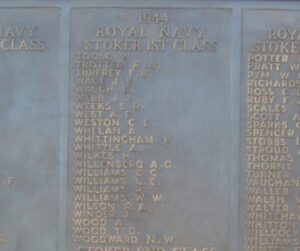The straggling village of Clynderwen lies on the Carmarthenshire – Pembrokeshire Border. Its war memorial was unveiled on 9 September 1922, by Major Gwilym Lloyd George, the son of the former Prime Minister, who had served in France with the 38th (Welsh) Division. After the Second World War, extra names were added to commemorate the four men who fell during that conflict. Some of these men are remembered on the Memorials of Narberth and Whitland, due to the close proximity of the villages. Photographs of the memorial have been kindly sent in by Les Nixon and Sarah Pugh.
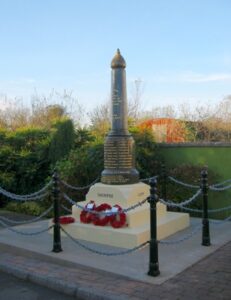
The Great War, 1914-1918
William Casson, Private, 200179, Welsh Regiment. William was born in London. He had worked as a farm servant at Clynderwen prior to the war, and enlisted at Carmarthen into the 1/4th Battalion, Welsh Regiment, which was the local Territorial Battalion, attached to 159 Brigade, 53rd (Welsh) Division. The Division landed at Cape Helles, Gallipoli, on 9 August 1915, and was immediately thrown into action, spending the next few days in isolated pockets, fighting against a Turkish counter-attack during the Battle of Sari Bair, and then at the Attack on Scimitar Hill. The Division remained here throughout the coming months, and suffered severe losses in manpower strength during the great November 1915 blizzard on Gallipoli, when its total strength was reduced to less than that of a full-strength Brigade. On 11 December 1915 the Division was evacuated to Mudros, and by 23 December 1915 were moved to Egypt. They remained on the Suez Canal Defences for the next twelve months, where it took part in operations against the Sultan of Darfur, and in March 1917 took part in the advance into Palestine. William was killed during the First Battle of Gaza, on 26 March 1917, aged 20. He has no known grave, and is commemorated on the Jerusalem Memorial, Israel. William is not commemorated at Clynderwen.
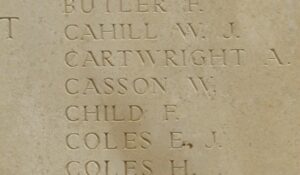
Benjamin Jones Edwards, Gunner, 150601, Royal Garrison Artillery. Benjamin was the son of Rees and Mary Edwards, of Gwynfryn, Clynderwen. He enlisted at Llanelli into the 290th Siege Battery, Royal Garrison Artillery. The battery was at Ypres for the Battle of Passchendaele, playing an important role in the attempts to destroy the German defences on the ridge. Benjamin was killed in action at Ypres on 26 August 1917, aged 30. He is buried at Talana Farm Cemetery, Belgium.
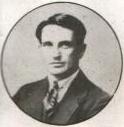
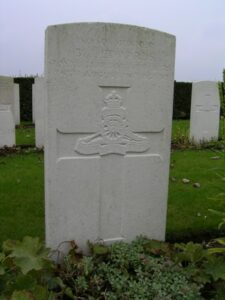
Edwin Howard Edwards, Private, 19145, Somerset Light Infantry. Edwin was the son of William and Rachel Edwards, of Bryn Bank, Egremont, Clynderwen. He enlisted at Egremont into the army and was posted to the 8th Battalion, Somerset Light Infantry, which was attached to 63 Brigade, 37th Division. The Battalion had originally crossed to France during the beginning of September 1915, and fought at the Battle of Loos, and the Battle of the Somme. On 8 July the Battalion transferred into the 37th Division, and they took part in the diversionary attack on Gommecourt, north of the main Somme battle areas. They then fought in the closing stages of the Somme Offensive, at the Battle of the Ancre, before taking part in the opening of the Arras Offensive, where they fought in the First Battle of the Scarpe, where they took Monchy-le-Preux by 14 April 1917. The Second Battle of the Scarpe opened on 23 April 1917, and it was during this day that Edwin was Killed in Action, aged 27. He is remembered on the Arras Memorial, France.
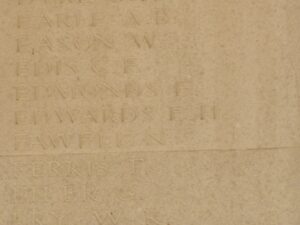
Henry Stephen Evans, Private, 46471, Welsh Regiment. Henry was born at Neyland, the son of Henry and Martha Evans. The family later moved to 14, Plasygamil Road, Goodwick, but Henry had married Elizabeth Harries, of Cwmbrechfa, Llanycefn, Clynderwen early in 1914, and the couple briefly set up home there. Henry enlisted at Goodwick into the army and in 1916 was posted to France, joining the 9th Battalion, Welsh Regiment, which was attached to 58 Brigade, 19th (Western) Division. The Division had been in France since July 1915, and had suffered heavy casualties during the Battle of Loos in September 1915 and on the Somme in July 1916, where it had played a major part by capturing La Boisselle, where the famous Lochnagar Crater still remains today. They suffered terrible casualties, but remained on the Somme, fighting at Pozieres, and at the Winter 1916/1917 Battles of the Ancre, alongside the Royal Naval Division. It was during that terrible, bleak Somme Winter that Henry was Killed in Action, on 2 March 1917, aged 26. He is remembered on the Thiepval Memorial, France. Henry is not commemorated at Clynderwen.
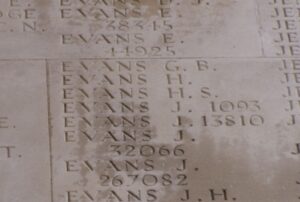
Griffith Morris Gibby, Pioneer, 220284, Royal Engineers. Griffith was the son of William and Martha Gibby, of Glynllewelyn Farm, Llanycefn. He enlisted at Carmarthen into the Royal Engineers, and was transferred into the No. 2 Special Company, R.E. This was a Gas Company, Chemical Warfare Engineers, allocated to the Fourth Army. The Special Companies handled the firing of gas shells from the 4-inch ‘Stokes’ mortars, and this was usually used as an offensive weapon prior to an Infantry attack. During June 1918, the British were hard pressed, trying to stem the relentless German Advance on the Western Front, and it was sometime then that Griffith was Wounded in Action. He was transported back to the Military Hospital at St. Omer, where he sadly Died of Wounds on 25 June 1918, aged 30. He is buried at Longuenesse (St. Omer) Souvenir Cemetery, France. Griffith is not commemorated at Clynderwen.
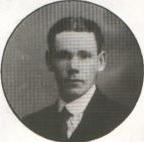
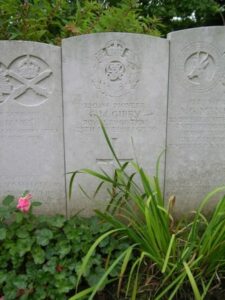
Gad Griffiths, Private, 28946, South Wales Borderers. Gad was the son of Thomas and Elizabeth Griffiths, of Carminefawr, Clynderwen. He enlisted into the 5th Battalion, South Wales Borderers, part of 58 Brigade, 19th (Western) Division. The Division fought through the Battles of Loos, the Somme and Passchendaele, and were one of the most Southern-most Division on the Western Front during the latter stages of the war, when Gad was Killed in Action during the Battle of the Selle, on 20 October 1918, and Gad was 25 years old. He is buried in St. Aubert British Cemetery, France. Gad is not commemorated at Clynderwen, but at Llanddewi Velfrey.
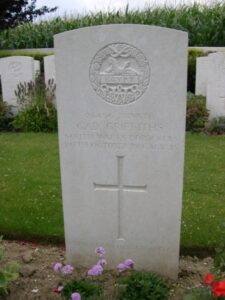
Samuel Edward James, Private, 99356, Machine Gun Corps. Samuel was the son of Edward and Margaret James, Pwllyrarian, Clynderwen. He enlisted at Carmarthen into the Army Service Corps, but was quickly transferred to the 249th Company, Machine Gun Corps. The Company was attached to the 14th (Light) Division, and took a leading role in the Passchendaele Offensive, attacking the Village of Langemark on 22 August 1917. Samuel was killed in action this day, aged 24. He had been in France less than two months, and was fated to remain there. His body was lost on the Battlefield, and so he is remembered on the Tyne Cot Memorial, Belgium.
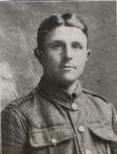

Thomas George James, Private, 200212, Welsh Regiment. Thomas was the son of William and Emily Ann James, of 65, Prendergast, Haverfordwest. It is thought that he lived in Clynderwen prior to the War, and enlisted back at Haverfordwest into the 1/4th Battalion, Welsh Regiment. They formed part of 159 Brigade, 53rd (Welsh) Division, and during July 1915 they sailed from Devonport for Egypt. They were then sent to Gallipoli, landing on 9 August 1915, and stayed on the Peninsula until the withdrawal in December that year, suffering heavy casualties. The Division were back in Egypt by 23 December 1915 and fought in the Palestinian Campaign against the Turkish Empire. It was during the First Battle of Gaza that Thomas was killed in action on 27 March 1917, aged 23. He is buried at Deir El Belah War Cemetery, Israel.
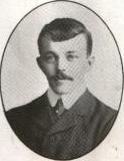
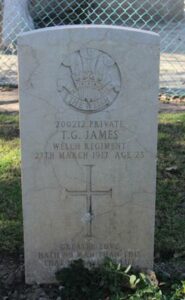
Henry John, Private, 202910, South Lancashire Regiment. Henry was the son of Thomas and Naomi John, of Brynhill, Clynderwen. He enlisted at Nantwich into the 2/4th Battalion, South Lancashire Regiment, part of 172 Brigade, 57th Division. The Division moved to France during February 1917, and were sent to the Armentieres Sector to familiarise themselves with trench warfare. It was at Armentieres that Henry was wounded, and was evacuated to the hospital at St. Omer. Henry died of wounds there on 7 June 1917, aged 32, and is buried in Longuenesse (St. Omer) Souvenir Cemetery, France. Henry is not commemorated at Clynderwen, but at Llanddewi Velfrey.
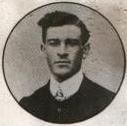
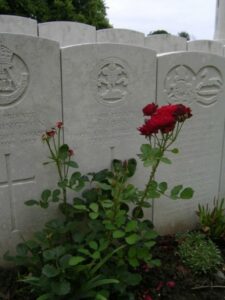
Benjamin Llewellyn, Private, 14316, Welsh Regiment. Benjamin was the son of Griffith and Martha Llewellyn, of Vron, Llanycefn, Clynderwen. He enlisted at Goodwick into the 8th Battalion, Welsh Regiment, who formed part of 40 Brigade, 13th Division and in January 1915 became Pioneers to the Division. The Division concentrated at Blackdown in Hampshire at the beginning of 1915, and by the end of June the entire Division had left the U.K. for the Mediterranean. They arrived at Mudros from Alexandria, and then were landed at Gallipoli during July 1915, taking part in the Battles of Sari Bair, Russell’s Top and Hill 60, and were evacuated from Helles on 6 January 1916. They held the Suez Canal defences for a month, but were sent to Mesopotamia to attempt the Relief of the besieged Garrison at Kut during March and April 1916, and it was during this campaign that Benjamin was Wounded in Action. He died of his wounds on 28 April 1916, aged 21, and is buried at Basra War Cemetery, Iraq. Benjamin is not commemorated at Clynderwen.
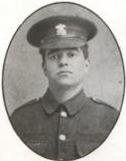
Hugh Morris, Private, 39645, Royal Welsh Fusiliers. Hugh was born in Clynderwen, the son of John and Maria Morris. The family had moved to Brynawel, Garnant prior to the war, as John was Station Master there for several years. Hugh worked as a colliery clerk before enlisting at Ammanford on 3 March 1916 into the Royal Welsh Fusiliers. On 11 December 1916 Hugh landed in France and was posted to the 9th Battalion, Royal Welsh Fusiliers, which was attached to 58 Brigade, 19th (Western) Division. The Division had fought at the Battle of Loos, and on the opening day of the Somme Offensive, and was posted North to the Flanders sector afterwards, to recuperate. Hugh died of pneumonia at 15 Casualty Clearing Station on 5 April 1917 aged 30. He is buried in Hazebrouck Communal Cemetery, France. Hugh is not commemorated at Clynderwen.
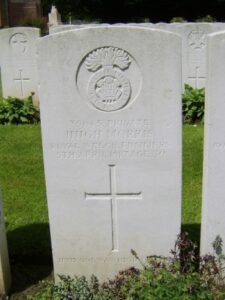
David George Perkins, Able Seaman, 197231, Royal Navy. David was born at Bushey, Hertfordshire on 31 August 1882, the son of George Perkins. George was originally from St. Clears. He had retired from the Metropolitan Police, and bought the White Lion Hotel, Pwll Trap, and his five sons were educated there. George then sold up, and bought the Mason’s Arms, Clynderwen. Prior to the outbreak of war, David had already served for 14 years in the Royal Navy, and he sailed for the Mediterranean aboard the armoured cruiser, HMS Swiftsure, which was part of a large fleet, sent to support the Gallipoli offensive. David suffered from Gas Poisoning on Gallipoli, and Died of Wounds on 6 June 1915, aged 33. He was buried at Sea, and so is remembered on the Chatham Naval Memorial, Kent. His brother, Ebenezer, also fell.
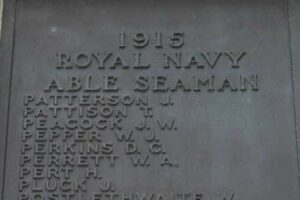
Ebenezer Perkins, Corporal, 11397, Somerset Light Infantry. Ebenezer was born at Chelsea, the son of George Perkins. George was originally from St. Clears. He had retired from the Metropolitan Police, and bought the White Lion Hotel, Pwll Trap, and his five sons were educated there. George then sold up, and bought the Mason’s Arms, Clynderwen. Ebenezer resided at St. Clears prior to the War, and enlisted at Pentre into the 6th Battalion, Somerset Light Infantry, part of 43 Brigade, 14th (Light) Division. During May, 1915 the Division moved to the Western Front. They fought at Hooge and Bellewarde during late 1915 at Second Ypres, and gained the dubious honour of becoming the first Division to be attacked by flamethrowers at Hooge. They moved to the Somme at fought at Delville Wood before moving North to Flers, where it was during the Battle of Flers-Courcelette that Ebenezer was killed in Action on 16 September, 1916 aged 27. He is remembered on the Thiepval Memorial. His brother, David George Perkins, was killed at Gallipoli.
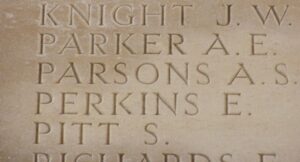
Jason Peters, Able Seaman, Z/2331, Royal Naval Volunteer Reserve. Jason was born at Clynderwen on 9 September 1892, the son of Thomas and Margaret Peters of Jones Terrace. The family moved upon the death of Jason’s father to Bethesda Cross, near Narberth. Jason enlisted at Abertridwr into the Anson Battalion of the Royal Naval Division, part of 189 Brigade, 63rd (Royal Naval) Division. The Royal Naval Division had been formed at the request of the First Lord of the Admiralty, Winston Churchill, making use of the several thousand men of the Royal Naval Volunteer Reserve who were left without ships to serve on, and were surplus to requirements. They first saw action during the Defence of Antwerp, and were sent to Gallipoli. They saw substantial service here, and by the withdrawal from the Peninsula, very few of the original men with naval service remained. The Division arrived at Marseilles during May 1916, and were used in the Somme offensive, taking part in the Battle of the Ancre, where they made a distinguished name for themselves that was to live with them throughout the war. It was during this Battle that Jason was killed in Action on 13 November 1916. He was 24 years old, and his body was lost in the now swamp-like Ancre Valley. He is remembered on the Thiepval Memorial, France.
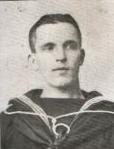
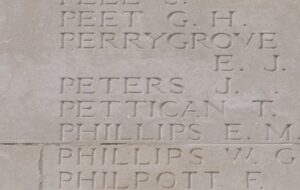
Frederick Lloyd Phillips, Private, 45045, Welsh Regiment. Frederick was born at New Moat, the son of Thomas and Margaret Phillips. The family later moved to Penbrist, Rosebush, Maenclochog. He enlisted at Carmarthen into the army, and was posted to join the 15th (Carmarthen) Battalion, Welsh Regiment, which was in France attached to 114 Brigade, 38th (Welsh) Division. The Division had fought at Mametz Wood and Passchendaele, capturing the Pilckem Ridge, and played a major part in the defence of the Somme Sector in 1918 at the time of the German Offensive. From 21 August 1918 onwards the 15th Welsh crossed the River Ancre, and began its part in the great offensive which was to win the war. It was during the Second Battle of Bapaume that Frederick was wounded. Frederick Died of Wounds on 5 September 1918 aged 29. He had been evacuated to the Military Hospital at Rouen, where he now lies in the St. Sever Cemetery Extension, France.
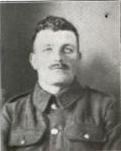
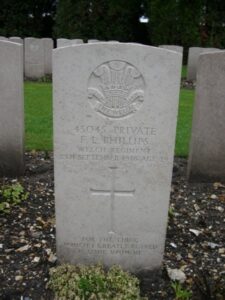
Frederick George Tansill, Private, 42156, East Yorkshire Regiment. Frederick was born at Clynderwen, the son of George and Catherine Tansill. The family later resided at 1, Towy Villa, Station Road, Carmarthen. He worked at the GWR Depot at Carmarthen prior to enlisting at Carmarthen into the army. He was posted to the 1/4th Battalion, East Yorkshire Regiment, which was attached to 150 Brigade, 50th (Northumbrian) Division. The Division had been in France since April 1915, and had fought at Ypres and on the Somme. During 1917 they fought at the Battle of Arras, then at Third Ypres. During March 1918 they were stationed near St. Quentin, and were hit here by the German Spring Offensive of 21 March 1918, taking part in a gallant rearguard action during the Actions at the Somme Crossings, and then at the Battle of Rosieres. After suffering terrible casualties, the Division moved north to Flanders to rest and rebuild, but in April the Germans launched an attack in Flanders, around the Lys, and the Division saw much fighting again. The battered Division was moved to a quiet sector on the Aisne to rebuild, but unfortunately the Division was hit hard by a surprise enemy attack, suffered heavy casualties. Frederick was killed on the Aisne on 8 September 1918. He was 19 years old, and is buried at St. Erme Communal Cemetery Extension, France. His elder brother William also fell. Neither brother is commemorated at Clynderwen.

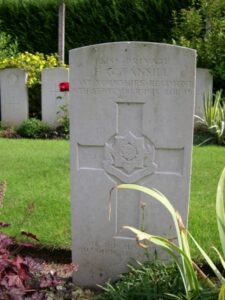
William James Tansill, Sapper, 448488, Royal Engineers. William was born at Clynderwen, the son of George and Catherine Tansill. The family later resided at 1, Towy Villa, Station Road, Carmarthen. He worked as an Engine Cleaner at the GWR Depot at Carmarthen prior to the war. And enlisted at Carmarthen into the Welsh Field Company, Royal Engineers. The Company served at Gallipoli with the 53rd (Welsh) Division, before being evacuated to Egypt in January 1916, where it was renamed the 437th Field Company. It remained on the Suez Canal defences for a year, and then in March 1917 took part in the advance into Palestine. William became ill and died of dysentery on 29 July 1917, aged just 22. He is buried at Alexandria (Hadra) War Memorial Cemetery, Egypt. His brother Frederick also fell. Neither brother is commemorated at Clynderwen.

James Thomas, Private, 1913, Welsh Guards. James was the son of Morris and Martha Thomas, of Clynderwen. He enlisted at Neath into the 1st Battalion, Welsh Guards, part of 3rd Guards Brigade, Guards Division. James survived the carnage of the Battle of Loos during September 1915, and was with the Division when they moved south to the Somme area. At the Somme, the Division fought in the Battle of Morval, and it was here that James was killed in action on 25 September 1915, aged 32. He is remembered on the Thiepval Memorial, France. James is not commemorated at Clynderwen.
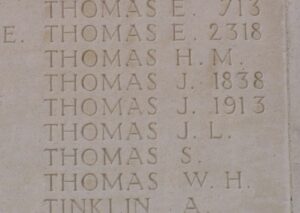
William Thomas, Private, 1546, Welsh Regiment. William was the son of Edwin and Sarah Thomas, of Blaenconin Cottage, Clynderwen. He enlisted at Treharris into the 1/5th Battalion, Welsh Regiment, which was attached to 159 Brigade, 53rd (Welsh) Division. The Division landed at Gallipoli on 9 August 1915, and was immediately plunged into heavy fighting over the coming days. The battalion was defending the British positions at Cape Helles when William was wounded. He died of wounds on 17 September 1915, aged 26. William must have been buried at sea from a Hospital Ship, as he is remembered on the Helles Memorial, Gallipoli.
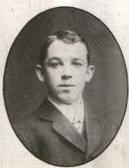
Henry James Frederick Weeks, Gunner, 741191, Royal Field Artillery. Henry was born at Clynderwen around December 1885, the son of Frederick and Laura Weeks. He later lived at Newport, Monmouthshire, and enlisted there into the Royal Field Artillery. Henry was posted to France to join D Battery, 124th Brigade, Royal Field Artillery, which was attached to the 37th Division. Henry was killed during the Third Battle of Ypres, on 4 September 1917. He was 31 years old, and is commemorated on the Tyne Cot Memorial, Belgium. Henry is not commemorated at Clynderwen.
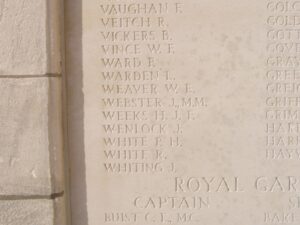
Thomas Arthur Williams, Private, 372792, London Regiment. Thomas was born at Narberth, the son of Daniel and Eleanor Williams. Thomas married Francis Elizabeth Bodill, of Saundersfoot in 1915 and the couple resided at Crosslanes, Clynderwen. Thomas enlisted at Clynderwen into the 8th Battalion (Post Office Rifles), the London Regiment, part of 140 Brigade, 47th Division. The Division were on the Somme in 1916, taking part in the Battle of Le Transloy, when Thomas was Killed in Action on 7 October 1916, aged 33. He is buried in Warlencourt British Cemetery, France.
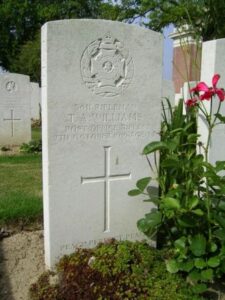
World War Two, 1939-1945
Benjamin Lewis, Ordinary Telegraphist, LT/JX428399, Royal Naval Patrol Service. Benjamin was the son of Daniel T. and Annie Howell Lewis, of Gwynfryn, Clynderwen. He served during WW2 in the Royal Naval Patrol Service, aboard H.M. Trawler Kingston Beryl. She had been requisitioned by the Admiralty on 26 August 1939, and converted for anti submarine duties, joining the 23rd Anti-Submarine group off Scotland. Whilst on convoy escort duty off Skerryvore on 25 December 1943, Kingston Beryl struck two German mines, blew up and sank. Benjamin was just 19 years old when he died that day, and is commemorated on the Lowestoft Naval Memorial, Suffolk.
James Thomas Rees, Flight Sergeant (Pilot), 1337576, Royal Air Force Volunteer Reserve. James was the son of John Henry and Anna Maria Rees, of Brynderwen, Clynderwen. He was a Pilot with 74 Squadron, RAF, known as Tiger Squadron, which had seen action during the Battle of Britain. The Squadron had supported the Normandy Landings, providing fighter-bomber cover over the beaches from its base at RAF Horsham St Faith with the faithful Spitfire XVI. The Squadron moved to RAF Colerne in Wiltshire to convert to the modern Gloster Meteor jet fighter. James was killed during conversion training in Wiltshire on 24 July 1945. He was 23 years old, and is buried at Llandyssilio (Pisgah) Congregational Chapelyard.
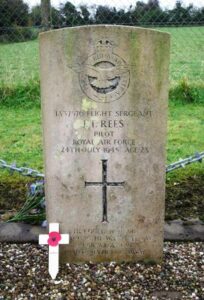
Iorwerth Thomas, Private, 14623559, The Welch Regiment. Iorwerth was the son of John and Margaret Thomas, of Pembroke, and resided at Clynderwen prior to the outbreak of war. He served in the 1/5th Battalion, the Welch Regiment, which was part of the 53rd (Welsh) Division. The Division landed on the Normandy beachhead about two weeks after D-Day, as part of the forces being built up in preparation for the break out from the Normandy Beach Head, and by 30 June the 1/5th Welch had moved into positions around Brouay. The Division saw its first fighting on the following day, which continued throughout the month. By the morning of 12 August 1944 the Division had moved into positions in readiness for the attack on the village of Fresney le Vieux. Iorwerth was killed in action during the attack on the village that day. He was just 19 years old, and is buried at Brouay War Cemetery, France.
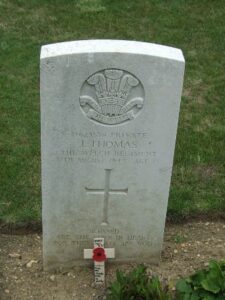
Llewellyn Emrys Williams, Stoker, D/KX109585, Royal Navy. Llewellyn resided at 11, Jones Terrace, Clynderwen, and enlisted into the Royal Navy, where he served as Stoker 1st Class aboard the American built frigate HMS Whitaker. Whitaker had taken part in the support of the Normandy landings in June 1944, before returning to home waters. On 1 November 1944, Whitaker was on patrol off Malin Head, when she was torpedoed in the bow by the German submarine U-483, and suffered severe damage. The crew bravely managed to put out the fires which had erupted after the torpedo strike, and Whitaker was towed to safety in Londonderry. Llewellyn was among 79 men killed during the torpedoing that day. He has no known grave, and is commemorated on the Plymouth Naval Memorial, Devon.
